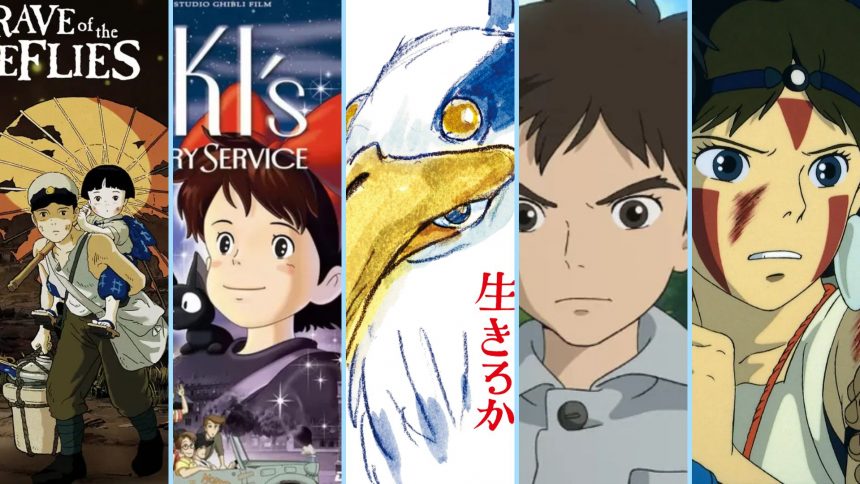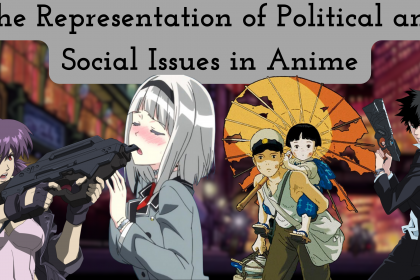Welcome to the captivating world of Studio Ghibli, the renowned animation studio that has left an indelible mark on the anime industry. With its rich storytelling, breathtaking visuals, and imaginative worlds, Studio Ghibli has earned global recognition and acclaim, rivalling even the mighty Disney. In this article, we will explore the influential role of Studio Ghibli in shaping the anime industry, focusing on the creative vision of its founders, particularly the legendary Hayao Miyazaki.
The Beginnings of Studio Ghibli
Founding of Studio Ghibli
Studio Ghibli was founded in 1985 by Hayao Miyazaki, Isao Takahata, and Toshio Suzuki. The studio’s name was inspired by the Arabic word “ghibli,” meaning hot desert wind, symbolizing the desire to blow a new wind through the anime industry. With a vision to create animated films that transcended the conventional boundaries of the medium, Studio Ghibli quickly gained a reputation for its unique storytelling and artistic excellence.
Hayao Miyazaki and Isao Takahata
At the heart of Studio Ghibli’s success were the creative minds of Hayao Miyazaki and Isao Takahata. Miyazaki, often hailed as the Walt Disney of Japan, is renowned for his ability to craft enchanting tales that resonate with audiences of all ages. Takahata, on the other hand, brought a distinct touch to Studio Ghibli’s films. He often explores complex themes and pushing the boundaries of animation. Together, their collaboration enriched the anime industry and elevated Studio Ghibli to unprecedented heights.
Studio Ghibli’s Creative Vision
Artistic Excellence and Attention to Detail
One of the defining characteristics of Studio Ghibli’s films is their unparalleled artistic excellence. Each frame is meticulously crafted, showcasing a level of detail that is awe-inspiring. From the lush landscapes to the intricately designed characters, every element of the animation is given careful consideration. This commitment to visual storytelling creates a sense of immersion and transports viewers into fantastical worlds that feel alive and vibrant.
Environmentalism and Nature Themes
Another notable aspect of Studio Ghibli’s creative vision is its deep-rooted connection to nature and environmentalism. Miyazaki’s films often highlight the delicate balance between humans and the natural world, emphasizing the importance of environmental stewardship. Movies like “Princess Mononoke” and “Nausicaä of the Valley of the Wind” tackle complex ecological issues, urging viewers to reflect on their relationship with the environment and the consequences of human actions.
Strong Female Characters
Studio Ghibli has been widely praised for its portrayal of strong, independent female characters. Unlike many traditional animated films, Ghibli’s heroines are complex individuals with their own agency and aspirations. Films such as “Spirited Away” and “Howl’s Moving Castle” feature female protagonists who navigate challenging circumstances. They also showcasing resilience, bravery, and a sense of self-discovery. These empowering portrayals have had a profound impact on audiences, inspiring a generation of young girls and challenging gender norms.
Studio Ghibli Impact on the Anime Industry
Influence on Animation Techniques
Studio Ghibli’s innovative approach to animation has had a significant impact on the industry as a whole. Miyazaki’s emphasis on hand-drawn animation and attention to detail has inspired countless animators worldwide. The studio’s use of traditional animation techniques, combined with occasional incorporation of computer-generated imagery, has set a benchmark for quality and craftsmanship. Ghibli’s influence can be seen in the works of other prominent studios and filmmakers, who have adopted similar techniques to create visually stunning and emotionally resonant animated films.
International Recognition and Success
While initially catering to a Japanese audience, Studio Ghibli’s films have transcended cultural barriers and gained international recognition. Movies like “My Neighbor Totoro” and “Spirited Away” have captivated audiences worldwide, earning critical acclaim and prestigious awards. Ghibli’s success has helped popularize anime in the West. Thus, opening doors for other Japanese animation studios and exposing a broader audience to the beauty and depth of the medium. The global success of Studio Ghibli has sparked a greater appreciation for anime as a legitimate form of storytelling, expanding its reach beyond niche audiences.
Inspiring Future Filmmakers
Studio Ghibli’s legacy extends beyond its own films. The studio’s imaginative storytelling and artistic prowess have inspired a new generation of filmmakers and animators. Many aspiring artists look to Miyazaki and Ghibli as a source of inspiration. Striving to create works that capture the same magic and emotional resonance. This influence can be seen in the works of contemporary animators who draw inspiration from Ghibli’s storytelling techniques. The influence also comes in art style, and thematic exploration, ensuring that the spirit of Studio Ghibli lives on in the future of the anime industry.
Studio Ghibli Comparison to Disney
Studio Ghibli Unique Storytelling Approach
While Disney has long been synonymous with animated films, Studio Ghibli offers a distinct and refreshing storytelling approach. Ghibli’s narratives often eschew traditional fairy tales and showcase a more nuanced exploration of human emotions and societal issues. Miyazaki’s films, in particular, have a dreamlike quality, blending reality with fantasy and addressing complex themes such as environmentalism, war, and identity. Studio Ghibli’s commitment to storytelling that resonates with both children and adults sets it apart from Disney’s often more formulaic approach.
Cultural Significance and Global Appeal of Studio Ghibli
Both Studio Ghibli and Disney have achieved immense cultural significance, but their impact and appeal differ in unique ways. Studio Ghibli’s films draw heavily from Japanese culture, folklore, and mythology, offering a window into the country’s rich heritage. This cultural specificity, combined with universal themes and relatable characters, has contributed to Ghibli’s global appeal. Disney, on the other hand, has a broader, more mainstream approach that transcends cultural boundaries. While Studio Ghibli’s films provide a glimpse into Japanese storytelling traditions. Disney’s reach extends to a wider range of audiences across the globe.
Conclusion
Studio Ghibli’s influence on the anime industry is undeniable. Through the visionary leadership of Hayao Miyazaki and Isao Takahata. The studio has created a legacy of exceptional storytelling, breathtaking animation, and imaginative worlds. Ghibli’s commitment to artistic excellence, environmentalism, and empowering female characters has resonated with audiences worldwide, inspiring future filmmakers and elevating the status of anime as a powerful medium of storytelling. As Studio Ghibli continues to captivate audiences with its enchanting films, its impact on the anime industry will continue to reverberate for generations to come.













